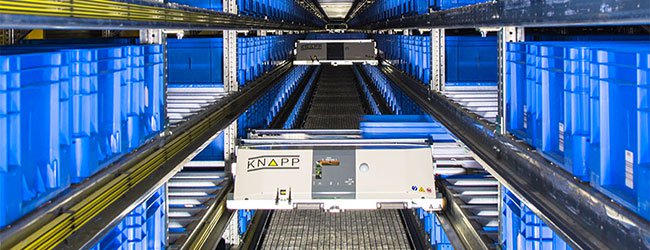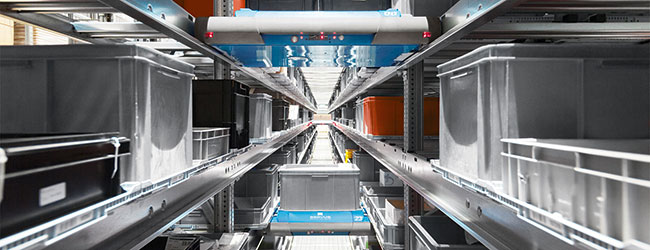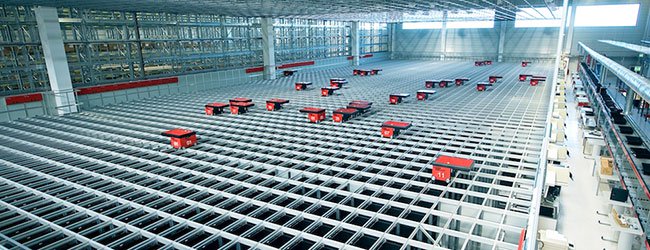
Which Goods-to-Person Technology is Right for Your Operation?
Tim Duket | 08 March 2016
With increasingly high customer expectations in the world of order fulfillment, many distribution and warehouse managers find themselves asking questions like:
- What are the current best practices for quick and responsive order fulfillment?
- How can I increase pick rates while maintaining, or improving, picking accuracy?
- How do I limit the amount of walking that goes into order fulfillment?
- Which available technology is best suited to help achieve these goals in my each-picking operation?
To help answer these questions, we need look no further than the best-in-class Goods-to-Person (GTP) technologies that are changing the face of order fulfillment. GTP technologies offer innumerable benefits such as increased throughput, dense storage, ergonomic picking, scalability, and product security.
Let’s look at four of the most exciting options available on the market today: Perfect Pick, Knapp OSR Shuttle, Servus, and AutoStore. Depending on your operation and improvement goals, you may find that one or more of these solutions is the missing link to taking your each-picking order fulfillment to the next level. Let’s take a closer look at each.
Perfect Pick
This aisle-based system employs multi-directional shuttles, called iBots, to quickly retrieve bins and present them to operators at the ends of narrow storage aisles. Usually with 10-15 iBots per aisle, Perfect Pick can present the operator a new tote in just a handful of seconds. Some key features and niche applications for this technology include:
- Quick and responsive end-of-aisle picking
- Multi-directional robots allow for high throughput rates from each aisle
- Great fit for e-commerce, general distribution with high throughput requirement and small pick quantities
Knapp OSR Shuttle
 Knapp’s OSR Shuttle is also aisle-based, but utilizes a combination of shuttles and end-of-aisle lifts to retrieve product. This allows the storage bins to actually leave the system altogether, which adds flexibility to have bins transported to external pick interfaces, put walls, and even locations across the facility. Features and ideal fits for the OSR include:
Knapp’s OSR Shuttle is also aisle-based, but utilizes a combination of shuttles and end-of-aisle lifts to retrieve product. This allows the storage bins to actually leave the system altogether, which adds flexibility to have bins transported to external pick interfaces, put walls, and even locations across the facility. Features and ideal fits for the OSR include:
- Proven technology with over 10 years of implementations
- High throughput system that can work with a variety of tote / tray sizes
- Buffering, sequencing, and loose picking applications in manufacturing and distribution
Servus
 Similar in approach to OSR is the Servus System, another aisle-based technology that uses an effective combination of shuttles (called ARC’s) and lifts to retrieve product. ARC’s, however, have the ability to leave the system themselves, allowing them to pass between aisles and travel into the surrounding facility as well. Other Servus features include:
Similar in approach to OSR is the Servus System, another aisle-based technology that uses an effective combination of shuttles (called ARC’s) and lifts to retrieve product. ARC’s, however, have the ability to leave the system themselves, allowing them to pass between aisles and travel into the surrounding facility as well. Other Servus features include:
- ARC’s do not have to be captive to aisles, but can traverse different levels, aisles, and leave the system entirely
- Totes, trays, and cartons of varying sizes can be handled
- Great fit for manufacturing, buffering and delivering products between work areas, general distribution
AutoStore
 AutoStore takes storage density to the next level by removing aisles altogether and storing product in stacks of bins that are built into a storage grid. Autonomous robots are placed on top of the grid and dig for product that they then deliver to picking interfaces on the exterior of the grid. Some of the highlights for AutoStore include:
AutoStore takes storage density to the next level by removing aisles altogether and storing product in stacks of bins that are built into a storage grid. Autonomous robots are placed on top of the grid and dig for product that they then deliver to picking interfaces on the exterior of the grid. Some of the highlights for AutoStore include:
- Very dense storage, ideal when tight space requirements are a driver
- System modularity in bins, robots, and pick interfaces
- Flexibility and expandability to adapt to changing requirements, such as for third-party logistics providers
Learn More To learn more about any of these technologies, visit our goods-to-person technologies webpage, or contact one of our engineering experts today.
Tim is a Senior Engineering Consultant working out of Bastian Solutions’ Indianapolis Headquarters. He received his Bachelor’s and Master’s degrees in Industrial Engineering from Purdue University. As part of Bastian Consulting, Tim supports clients with design engineering as well as system validation through simulation modeling, spanning everything from small process improvement initiatives up to highly-automated facility design.
Comments
No comments have been posted to this Blog Post
Leave a Reply
Your email address will not be published.
Comment
Thank you for your comment.